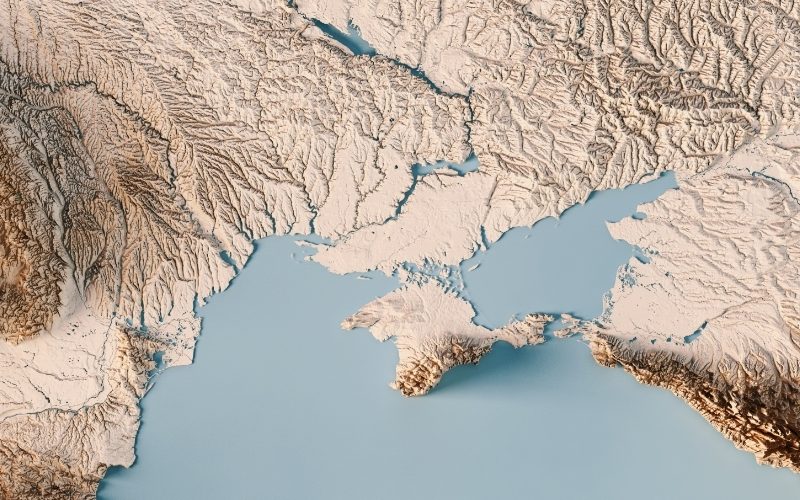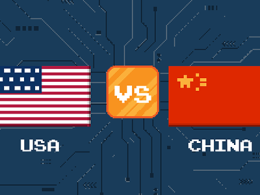by Erik L. Knutzen, CFA, CAIA, Chief Investment Officer—Multi-Asset Class, Neuberger Berman
For the past five summers, I have used one of our Weekly Perspectives to offer a vacation reading recommendation for those of you in the Northern Hemisphere heading off to the beach or the hills. It’s a good way to step back from the daily market news flow and consider some bigger ideas.
So, even amid the relentless headlines around the Federal Reserve’s latest rate hike and the U.S.’s second quarter of negative GDP growth, let’s widen our perspective and take the long view, at least for this week. For those who want our latest on the stories of the day, please head over to the NB Blog page.
Five years ago, my first recommendation was War and Peace, an epic novel set in the Russian Empire during the Napoleonic wars that reminded me of the importance of remembering the big picture. Three years later, stuck at home during the pandemic in 2020, the TV drama Chernobyl helped me reflect upon resilience, forward planning and strategic redundancy in our systems and portfolios in the face of catastrophe.
Current events have sent me back to that region for this year’s recommendation. The Gates of Europe: A History of Ukraine, by Serhii Plokhy, is an engaging survey of this shifting, culturally diverse and often conflict-ridden part of the world; and in my view, it offers many reminders of how important Ukraine has been, for millennia, to global trade and the global economy.
Fertile Soils
As Plokhy’s book reveals, the first references to the region in Western literature concern trade.
In the mid-fifth century BCE, the historian Herodotus described the abundance of valuable trade coming from the lands north of the Black Sea, where Greek colonists had built prosperous communities with strong connections to the local Scythians.
Four-and-a-half centuries later, things had changed. The Roman poet Ovid, exiled to Tomis in present-day Romania, writes about how the “wild” Sarmatians have wrested control of the region, making it an inhospitable redoubt of “frost and foes” beyond the limits of the Roman Empire and its trading networks.
From the earliest times, therefore, a key idea emerges about the country we now know as Ukraine: When it is peaceful and open, global trade flows; when it is violent and closed, a lot of trade gets blocked.
A glance at a map reveals why. Ukraine is a north-south, east-west crossroads on the vast Eurasian landmass, connecting Central and Western Europe to the fertile soils and mineral-rich geology of Eurasia, and the Baltic and Northeastern Europe with the Black Sea and the Mediterranean world. The South China Sea and the Suez Canal are among many critical and geopolitically sensitive trade routes in the modern world, but the lands to the north of the Black Sea are their ancient precursor and, as we have learned this year, they remain consequential.
Four Hammer Blows
The conflict in Ukraine has profound geopolitical, humanitarian, military and strategic ramifications—but it could also turn out to be the fourth hammer blow against seven decades of globalization.
The end of the Second World War, the fall of the Berlin Wall and China’s entry into the World Trade Organization were three key moments in the advance of globalization. The first established the institutions to make it happen, and the others opened those institutions to the world.
The Great Financial Crisis of 2007 – 09 was the first major setback. It revealed the potential fragility that comes with the complex interconnectedness of global markets, financial and real, and led to an uptick in protectionist measures in many countries. The Brexit and U.S. election votes of 2016, which led to fractured trading relations within Europe and between the U.S. and China, were the second blow—a populist backlash against the unequal benefits of globalization. Then came the COVID-19 pandemic, and everything it revealed about the vulnerability of world-spanning, hyper-efficient, just-in-time supply chains.
And the deglobalization lessons of the conflict in Ukraine? The class is still in session, but early conclusions are that, even in our high-tech, postmodern era, geography still matters, and the sources of some of our most basic needs—food and energy—are perhaps more concentrated and at-risk than we had imagined. It also appears to be hardening a return to Cold War-style segmented trading blocs, which were already re-emerging due to U.S.-China tensions over the strategic importance of semiconductors, data and technology infrastructure.
Deglobalization
This is supposed to be vacation reading, so forgive me for making the obligatory point about what all of this might mean for investors.
We believe we are in a sustained pullback in globalization. We do not think those four hammer blows are random and isolated events: Financial crises can amplify global economic inequalities; inequality feeds populism; populism generates conflict; pandemics, spreading via global trade and travel routes, can exacerbate inequalities and fuel further populist calls to harden borders, as well as cause restructuring of supply chains.
The era of globalization lowered the costs of labor and goods, kept a lid on inflation and interest rates, raised the share of growth accruing to capital and decreased the risk premia priced into financial assets. To take just one simple metric, the forward price-to-earnings multiple of the S&P 500 Index averaged less than 15 times in the 35 years before the Berlin Wall came down, but more than 20 times thereafter.
Deglobalization appears to be reversing all those things. That is likely to make it harder to meet long-term return targets while running the same level of risk, and more perilous to rely on bonds to diversify equities. We think a more active approach to investing will be necessary, and a more flexible approach to diversification—across regions; across styles; across liquid and illiquid markets; and across financial and real assets.
As an avid reader of history, however, what I want to end with is not an investment view but a recommendation of The Gates of Europe as a compelling read for those interested in learning more about this important region. I think its pages are a great reminder that history is never really in the past: It’s always just a turn of events away from being our tomorrow.
Copyright © Neuberger Berman














